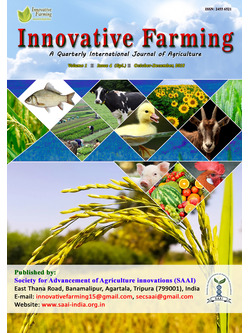
Transposons in Genome Size Variation
G. Thamodharan*
Dept. of Rice, Centre for Plant Breeding and Genetics, Tamil Nadu Agricultural University, Coimbatore, Tamil Nadu-641003, INDIA
R. Vinoth
Dept. of Rice, Centre for Plant Breeding and Genetics, Tamil Nadu Agricultural University, Coimbatore, Tamil Nadu-641003, INDIA
V. Ulaganathan
Dept. of Rice, Centre for Plant Breeding and Genetics, Tamil Nadu Agricultural University, Coimbatore, Tamil Nadu-641003, INDIA
DOI: NIL
Keywords: Transposons, genome size and repetitive sequence
Abstract
Genome size is constant to a species, differences in species is brought out by genome size variation. Changes in the genome size is mainly by the changes in the copy number driven by the various repetitive sequences. Transposons are the kind of repetitive sequences put forth the genome size variation by its mobility characteristics within the genome causes a great variation even closely related species. Studying the structure and functions of transposons is necessary to understand the mechanism of genome size variation and thereby it is possible to study the species relatedness in the evolutionary history.
Downloads
not found
Reference
Greilhuber, J., Borsch, T., Muller, K., Worberg, A., Porembski, S., and Barthlott, W. (2006). Smallest angiosperm genomes found in Lentibulariaceae, with chromosomes of bacterial size. Plant Biology, 8(6), 770–777.
Leitch, I. J., and Leitch, A. R. (2013). Genome size diversity and evolution in land plants. In: Leitch, I. J., Greilhuber, J., Dolezel, J., and Wendel, J. F. (Eds.), Plant genome diversity, 2, 307–322.
Poggio, L., Realini, M. F., Fourastie, M. F., Garcia, A. M., and Gonzalez, G. E. (2014). Genome downsizing and karyotype constancy in diploid and polyploid congeners: a model of genome size variation. Annals of Botany Plants, 6, 29.
